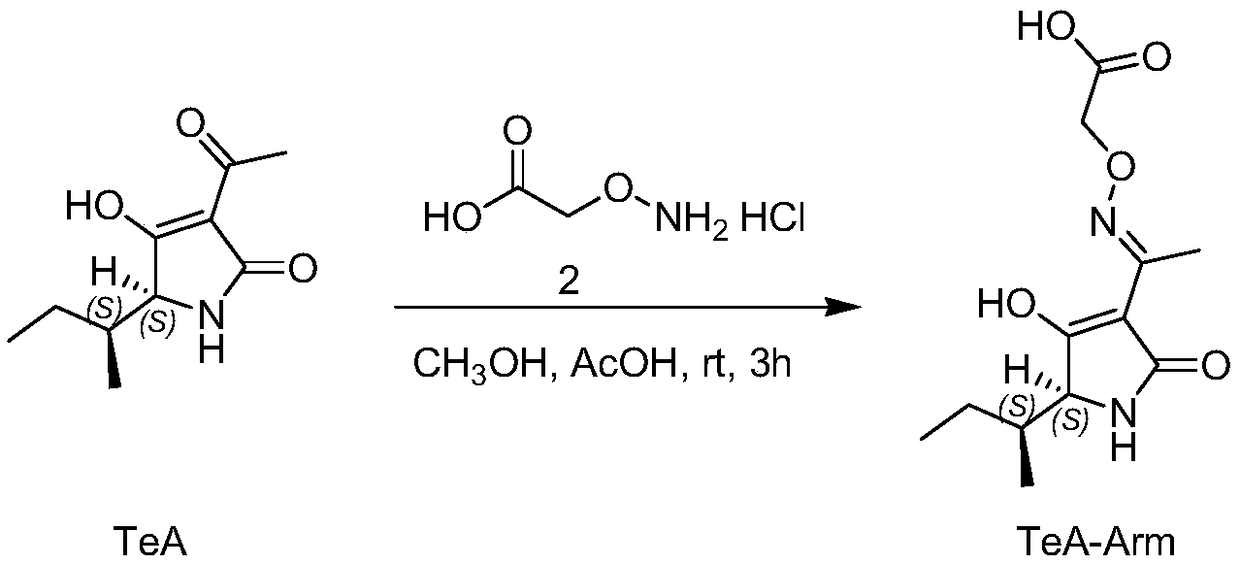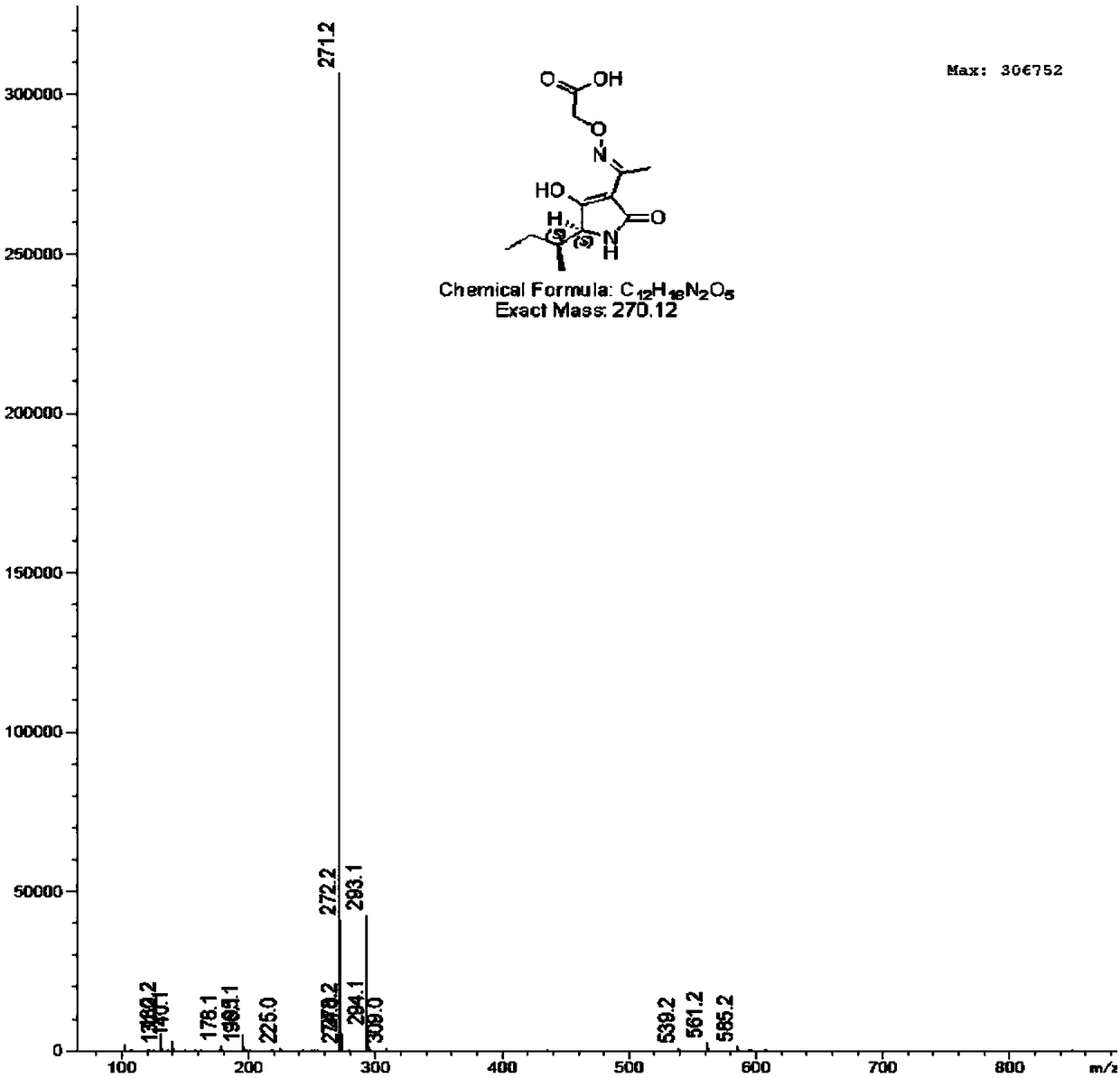Immunochromatographic test strip for rapid detection of tenuazonic acid
A technology of glycospironic acid and test strips, which is applied in the field of immunochromatographic test strips for rapid detection of finely interlinked glistritonic acid, and can solve the problems of low detection cost and short analysis time, etc.
- Summary
- Abstract
- Description
- Claims
- Application Information
AI Technical Summary
Problems solved by technology
Method used
Image
Examples
Embodiment 1
[0059] Example 1 Preparation of Immunochromatographic Test Strips for Rapid Detection of Alternate Glycosporic Acid
[0060] 1. Preparation of TeA hapten
[0061] Dissolve TeA (200mg, 1mmol) and carboxymethylhydroxylamine hemihydrochloride (130mg, 1mmol) in 10mL of anhydrous methanol, add 2mL of glacial acetic acid, and stir at room temperature for 3h. The organic solvent was evaporated under reduced pressure, and the remaining aqueous phase was purified by preparative liquid chromatography, and then freeze-dried to obtain a white solid (35 mg, 13%). Product characterization: high performance liquid phase (both 214nm and 254nm are greater than 98%); liquid mass (molecular weight 270, M+1=271); nuclear magnetic proton spectrum (deuterated DMSO, 7.77-7.70 produces one hydrogen, 4.68-4.661 produces two hydrogen, 3.94-3.87 produces one hydrogen, 2.33 produces three hydrogens, 1.76 produces one hydrogen, 1.28-1.05 produces two hydrogens, 0.93-0.89 produces three hydrogens, 0.86-0....
Embodiment 2
[0094] Specificity and sensitivity analysis of embodiment 2 immunochromatographic test strips
[0095] 1. Detection limit test
[0096] Take a ground blank wheat sample, add TeA standard substance to make the concentration respectively 50, 25, 10, 5, 1 ng / mL. Take 70 μL of the above-mentioned wheat extracts containing TeA standards, drop them on the prepared colloidal gold immunochromatography test strips for detection, observe the color development results after 10 minutes, and repeat the measurement three times for each sample.
[0097] It can be seen from the results that when the TeA concentration in the sample is less than 10 ng / mL, the red intensity on the detection line increases with the decrease of the TeA standard concentration; when the TeA concentration is greater than 10 ng / mL, the detection line does not show color. The above results show that the detection limit of the test strip is 10ng / mL.
[0098] 2. Specificity test
[0099] Use TeA immunochromatographic ...
Embodiment 3
[0100] Application of embodiment 3 immunochromatography test strips
[0101] 1. Sample pretreatment
[0102] Weigh 5 g of the ground sample to be tested, add 25 mL of methanol aqueous solution with a volume concentration of 80%, mix well, shake and extract at room temperature for 30 min, let it stand for 10 min, and dilute the supernatant, that is, the extract with water, to make the diluent The final concentration of methanol was 26.7%.
[0103] 2. Test with test strips
[0104] Use a pipette to take 70 μL of the diluted sample solution (2-3 drops from the dropper) and drop it vertically into the sample hole, and at the same time take 70 μL of 26.7% methanol water as the negative control solution; start timing when the liquid flows, and react for 10 minutes. Interpretation results.
[0105] 3. Analyze test results
[0106] Negative (-): The color of the T line is darker than that of the C line or the color is consistent, indicating that the TeA toxin in the sample is belo...
PUM
 Login to View More
Login to View More Abstract
Description
Claims
Application Information
 Login to View More
Login to View More - R&D
- Intellectual Property
- Life Sciences
- Materials
- Tech Scout
- Unparalleled Data Quality
- Higher Quality Content
- 60% Fewer Hallucinations
Browse by: Latest US Patents, China's latest patents, Technical Efficacy Thesaurus, Application Domain, Technology Topic, Popular Technical Reports.
© 2025 PatSnap. All rights reserved.Legal|Privacy policy|Modern Slavery Act Transparency Statement|Sitemap|About US| Contact US: help@patsnap.com



